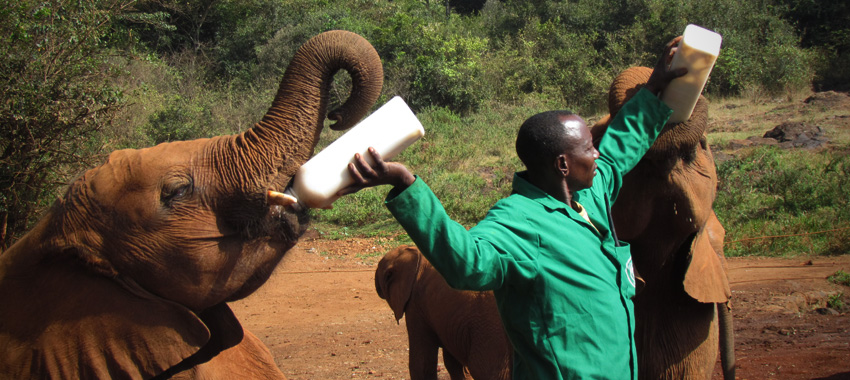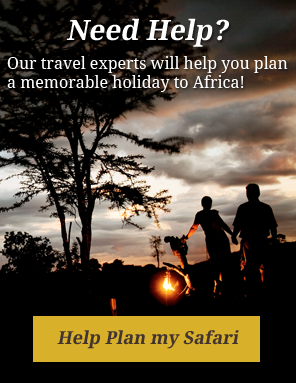 Are you a photographer and a wildlife enthusiast? Then, there will be no greater experience than traveling to one of the most spectacular wildlife regions in the world, Kenya. This safari is entirely dedicated to David Sheldrick’s Wildlife Trust (DSWT) work and is led by a specialist in wildlife photography. We firmly believe that this is the ultimate photographic safari while celebrating the work of a great conservationist Dr. Dame Daphne Sheldrick DBE. And by the way, did you know that it took 28 years of trial and error before Dr. Daphne Sheldrick discovered the right formula of milk substitute for infant orphans before they are reintegrated back into the African wild? Now you know! We have the tours running in 2017 and 2018.
Are you a photographer and a wildlife enthusiast? Then, there will be no greater experience than traveling to one of the most spectacular wildlife regions in the world, Kenya. This safari is entirely dedicated to David Sheldrick’s Wildlife Trust (DSWT) work and is led by a specialist in wildlife photography. We firmly believe that this is the ultimate photographic safari while celebrating the work of a great conservationist Dr. Dame Daphne Sheldrick DBE. And by the way, did you know that it took 28 years of trial and error before Dr. Daphne Sheldrick discovered the right formula of milk substitute for infant orphans before they are reintegrated back into the African wild? Now you know! We have the tours running in 2017 and 2018.
Safari Overview
This is your chance to meet the souls you have fostered along with the souls who watch over them 24/7. If you have not fostered a baby elephant, we can help you do it easily before or while on this tour. Do you know how much it costs to foster a baby elephant? From $50 per year, you can support one of the orphans. The tour will be visiting the DSWT Nairobi nursery for public, private, and foster parent visit. You will also be heading to Ithumba Camp in Tsavo East National Park as well as the Voi Reintegration Unit to see the rescued elephant being reintegrated back to the wild. The safari will also explore the Secret world of Kibwezi Forest near the Chyulu Hills National Park. This is the place where elephants who can’t cope with the harsh realities of Tsavo due to injuries are transferred to. Another stop will be in Amboseli National Park to see some of the great tuskers and herds that inhabit the park. This Park will offer you greater photography opportunity enhanced by Mt. Kilimanjaro which create a unique background. You will also have a great opportunity to enjoy a cultural treat by the Maasai while on this safari. You can view the detailed safari here
Private Scheduled Photographic Safaris
This itinerary has been designed exclusively for clients who are interested in the work of David Sheldrick Wildlife Trust or for those interested in wildlife conservation. Being a scheduled safari, you will be sharing your experience with other similarly minded wildlife photographers and conservation supporters whom we feel that the combined knowledge of such a trip will enrich their experiences for all and promote the work of Dr. Dame Daphne.
Safari members and guides
We are looking at a small group tour to offer an entirely private experience. The tour is limited to 8 travelers. This tour is led by Dick Berry and Henry Gathura who are committed to offering a life time experience. Dick has traveled through the vast of African wilderness from South Africa to eastern Africa and is an award-winning wildlife photographer and a conservationist by heart. Henry is the team leader. He is the lead guide and will be at the forefront explaining the work of David Sheldrick Wildlife Trust, the Elephant behavioral tendencies, the history of National parks and places. He will also provide other related information about elephants and other wild animals that are in DSWT fold. Don’t forget that on this tour, you get to see and photograph other animals too. There will be lions, rhinos, giraffes, zebras among others. Henry will be at hand to give you more information on your encounters.
How does this safari help the work of Dr. Dame Daphne of David Sheldrick Wildlife Trust?
Apart from highlighting the good work being done by her organization, you will also be contributing directly through payment made to visit the Nairobi nursery unit. David Sheldrick Wildlife Trust also runs several accommodation units where you will stay while on this safari. They are standards luxury camps hidden deep in the heart of their operation areas in Tsavo East National Park and Kibwezi Forest Reserve. All their units are self-catering but your food cost is factored on this safari. All proceeds from your accommodation will be in support of their work and the work of Kenya Wildlife Service.
Ithumba Camp is an exclusive, stylishly and rustic camp designed for the intrepid traveler who relishes being off the beaten track. At Ithumba, you will appreciate big skies, star-studded nights and a rich array of fascinating species inhabiting this remote and wild landscape of Tsavo East National Park. Ithumba Hill is the David Sheldrick Wildlife Trust’s newest Retreat created to offer increased luxury for guests exploring Tsavo East’s remote northern area whilst enjoying visits to the Trust’s Ithumba Elephant Reintegration Unit. These two camps offer you the exclusive game viewing within the unique Northern Area of Tsavo as you also get to see the orphans at the stockades in the early morning, and evening as well as at the 11am mud bath. There are also other animals to see while on this two camps. Umani Springs is a beautiful Eco-lodge in support of Kibwezi Forest and its denizens. The Eco-lodge offers the epitome of African comfort whilst actively pursuing environmental stability and wildlife preservation.
What you need on this photo safari, Equipment’s
Bring two cameras whichever make you are comfortable with. We advise Canon and/or Nikon Cameras. One for telephoto lens and another good quality point and shoot with a wide angle-mid zoom. This will be very useful when the animals are closer.
Lenses: Get faster lenses with a range of 200 -400mm zoom. You are in the wild and the animals will show and go at the least expected time. This will be good if you have lens extender. We recommend 1.4X extender but some people are ok with the 2.0 extenders. Come with what works better with you.
Bring external camera flash for early morning, late evening and night photography. They help to fill in shadows and cut down on contrast during the day photography.
A backpack camera bag is ideal carry-on during your safari. It keep all your equipment safe and from dust. This can be the same bag you keep you travel essentials like visa, credit cards, cash among others or it can be specifically for camera equipment’s
For Stabilization during photography, don’t worry, we will provide beanbags. However you can bring a monopod and a light carbon fiber tripod.
Bring lots of Storage media. We can guarantee you that; you will have over 4000 images during this tour. Bring high volume and good quality Compact Flash cards or storage disk. You can consider bringing on a laptop computer where you can download your images in the evening. An external hard drive can also be very useful. An external hard disc will come in handy because you will need to constantly back up your images. This is a rule on this safari. Make at least two separate backups.
You need a Card Reader and a camera cable to facilitate your back up plan for your images. A rain cover will come in handy to protect your camera and related equipment. You also need to have spare batteries and chargers. Be prepared with Lens Cleaning Solution and Wipes, it’s get dusty while on safari and you will need to constantly clean your lenses.
What to wear during this Photography safari?
We recommend a set of safari clothes which should be dull in color; Neutral tones like beige, khaki, stone and light brown don’t show the dirt and dust to which you’ll be exposed.
- Shorts and t-shirts or light trousers for the daytime.
- A wide brimmed hat to shade you from the sun – this should have string/straps, it could be blown off while game viewing. A cap will also be fine.
- Sun protection lotion/cream. Insect repellants comes in handy.
- Long trousers and long- or short-sleeved shirts for the evening, as protection from mosquitoes and chilly evenings and mornings.
- A fleece/jumper/sweater for the early morning (or a safari jacket) and evening game drives, as it tends to get a bit chilly.
- Swimming costumes/bathing suits as most of the lodges and camps have swimming pools.
- Good pair of sun glasses as you will be on the equator where the sun is very powerful.
- A pair of sport shoes or comfortable walking shoes.
- A small Maglite or flashlight.
- A small supply of pens, pencils and exercise or notebooks for village children…the gesture is always appreciated. Don’t take candy/sweets as these are bad for children’s teeth – most people do not have/cannot afford toothbrushes.
How do you sign up? This is the easy part. Just fill this form indicating that you are interested in this safari and we will advise on available open dates. You can also get to us if you have any questions and we will get a proper response to you as quickly as we can.





